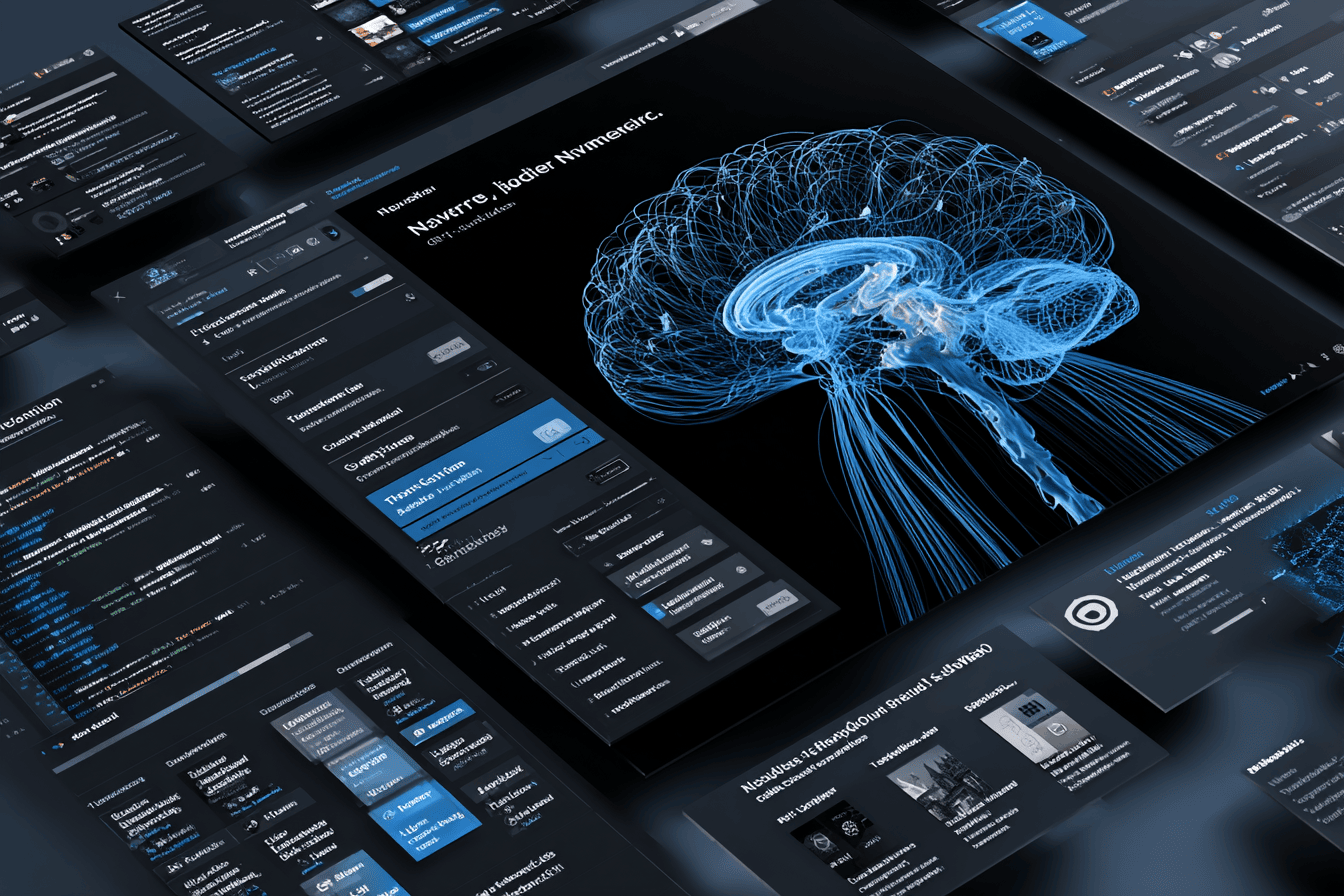Advanced AI Prompt Engineering for Generative Engine Optimization
Introduction and Overview
As we navigate the digital landscape of mid-2025, generative AI has fundamentally transformed how information is discovered, processed, and cited online. Generative Engine Optimization (GEO) has emerged as the natural evolution of SEO, focusing on creating content that AI systems recognize as authoritative and worthy of citation. This shift represents a paradigm change in content strategy – no longer are we simply optimizing for search engines, but for the complex neural networks that power modern AI assistants and knowledge systems.
This guide explores the advanced techniques of prompt engineering and content creation that make your work more likely to be cited by AI engines. With generative AI now responsible for answering billions of queries daily, appearing as a citation in these responses can drive significant traffic and establish unparalleled authority in your field.
Why Generative Engine Optimization Matters in 2025
- AI assistants now account for over 40% of all information discovery online
- Citation in AI responses can increase site traffic by 300-500% compared to traditional search
- Content optimized for AI engines typically ranks better in traditional search as well
- First-mover advantage remains significant in this rapidly evolving landscape
Key Concepts and Fundamentals
Understanding AI Citation Mechanics
Modern AI engines (as of mid-2025) determine citation-worthiness through several key factors:
- Information Density – Content with high information-to-word ratio
- Factual Precision – Verifiable claims with supporting evidence
- Structural Clarity – Logical organization that machines can parse effectively
- Semantic Uniqueness – Content that adds novel information to the knowledge graph
- Authority Signals – Markers that indicate expertise and trustworthiness
The Citation Threshold Model
The current generation of AI systems uses what researchers call the “Citation Threshold Model” to determine when to cite sources. Content must exceed specific thresholds across multiple dimensions to trigger citation. These thresholds vary by topic, with highly specialized or technical subjects having different requirements than general information.
Citation Likelihood = (Information Density × 0.3) + (Factual Precision × 0.25) +
(Structural Clarity × 0.2) + (Semantic Uniqueness × 0.15) +
(Authority Signals × 0.1)
When this score exceeds 0.7 (on a scale of 0-1), citation becomes highly likely.
Step-by-Step Implementation
1. Conduct AI-Focused Topic Research
Begin by identifying topics where AI engines frequently cite sources:
- Complex technical concepts requiring explanation
- Statistical data and research findings
- Step-by-step processes and methodologies
- Emerging trends with limited existing coverage
- Specialized knowledge not widely available
Implementation Tool: The GEO Research Dashboard (released in early 2025) can identify topics with high citation potential but limited existing coverage.
2. Structure Content for Machine Comprehension
Modern AI systems parse content more effectively when it follows specific structural patterns:
- Use clear hierarchical headers (H2, H3, H4) that create logical content trees
- Implement definition-first paragraphs where the main concept appears in the opening sentence
- Create information clusters where related concepts are grouped together
- Use numbered lists for processes and bullet points for related but non-sequential information
Example structure for high citation potential:
## Main Concept (H2)
[Definition paragraph with key term in first sentence]
### Sub-component 1 (H3)
[Explanation with specific details]
* [Supporting point with data]
* [Supporting point with example]
### Sub-component 2 (H3)
[Explanation with specific details]
1. [Process step with specific action]
2. [Process step with specific action]
3. Optimize Information Density
AI engines preferentially cite content with high information density:
- Aim for 2-3 distinct, valuable facts per paragraph
- Eliminate filler phrases and redundant explanations
- Include specific numbers, percentages, and measurable data points
- Create information-rich tables for comparative data
- Use concise, precise language that maximizes signal-to-noise ratio
4. Implement Authority Markers
Specific textual elements signal authority to AI systems:
- Citation of primary research with DOI numbers
- Inclusion of technical terminology with clear definitions
- Data visualizations with source attribution
- Expert quotes with proper attribution
- Methodological transparency about how conclusions were reached
Best Practices and Tips
Content Formatting for Maximum AI Readability
| Element | Best Practice | Why It Works |
|---|---|---|
| Headers | Use keyword-rich, descriptive headers | Creates clear content mapping for AI parsing |
| Lists | Implement numbered and bulleted lists | Helps AI identify discrete information points |
| Tables | Use for comparative data | Simplifies complex relationships for AI comprehension |
| Code blocks | Include for technical topics | Signals technical precision and expertise |
| Definition blocks | Set apart key terms | Helps AI identify authoritative explanations |
Semantic Optimization Techniques
Beyond keywords, focus on semantic relationships that AI engines recognize:
- Implement entity-relationship mapping in your content structure
- Use industry-standard terminology consistently
- Create clear conceptual bridges between related ideas
- Develop comprehensive taxonomies within your content
- Establish clear categorical hierarchies
Verification-Ready Content
Modern AI systems prioritize content that can be easily verified:
- Link claims to primary sources whenever possible
- Include specific attribution for statistics and research findings
- Provide methodological details for any original research
- Date all time-sensitive information precisely
- Distinguish clearly between facts and opinions
Common Mistakes to Avoid
The Hallucination Trap
Content that triggers AI hallucinations (incorrect information generation) is automatically downranked:
- Avoid ambiguous phrasing that could be misinterpreted
- Don’t use metaphorical language for technical concepts
- Steer clear of speculative statements without clear markers
- Avoid creating false associations between unrelated concepts
- Don’t present correlation as causation
Over-Optimization Patterns
Just as with traditional SEO, certain patterns trigger AI “over-optimization” penalties:
- Keyword stuffing (now detected semantically, not just by density)
- Artificially fragmented content designed solely for citation
- Circular definition structures
- Unnecessary technical jargon in non-technical contexts
- Repetitive information patterns
Advanced Strategies
Semantic Cluster Optimization
The most advanced GEO practitioners now develop semantic clusters – groups of related content pieces that collectively establish topical authority:
- Create a core definitional piece that establishes fundamental concepts
- Develop supporting content that explores specific applications or subcategories
- Build connection pieces that establish relationships between concepts
- Update all cluster content synchronously to maintain consistency
Citation Velocity Enhancement
Research shows that new content experiences a “citation velocity” period during the first 2-4 weeks after publication:
- Release supporting social proof simultaneously with main content
- Implement a staged release strategy for complex topics
- Actively promote to human experts who can validate your content
- Create companion content in multiple formats (video, audio, visual)
- Establish clear authorship and expertise signals from day one
Structured Data Implementation
While traditional structured data (Schema.org) remains important, new AI-specific structured formats have emerged:
- AI Citation Markup Language (ACML) – Released in late 2024
- Neural Knowledge Graph Tags – For specialized technical content
- Verification Point Markup – For factual validation
Example ACML implementation:
<div data-acml="factBlock" data-acml-category="technical" data-acml-confidence="0.95">
<p data-acml="claim">The average processing speed of quantum language models reached
<span data-acml="metric" data-acml-unit="tokens-per-second">12,500</span> in Q2 2025.</p>
<cite data-acml="source" data-acml-type="research" data-acml-date="2025-04-15">
Quantum NLP Consortium Annual Report, doi:10.31942/qnlp.2025.04
</cite>
</div>
Conclusion and Next Steps
Generative Engine Optimization represents the next frontier in digital content strategy. As AI systems increasingly mediate information discovery, creating content specifically engineered for citation has become essential for visibility and authority.
The techniques outlined in this guide reflect the current best practices as of mid-2025, but this field continues to evolve rapidly. The organizations that establish themselves as citation-worthy sources now will build compounding advantages as AI systems increasingly rely on trusted information sources.
Action Items
- Audit Your Existing Content: Evaluate your top-performing content for citation potential using the Citation Threshold Model.
- Develop a GEO Strategy: Create a specific plan for optimizing new and existing content for AI citation.
- Implement Structured Data: Add appropriate AI-specific markup to high-value content.
- Monitor Citation Metrics: Track which content pieces are being cited by major AI systems using citation tracking tools.
- Create Semantic Clusters: Identify your core topics and develop comprehensive semantic clusters around them.
By implementing these strategies, you’ll position your content to thrive in the AI-mediated information ecosystem of 2025 and beyond.






